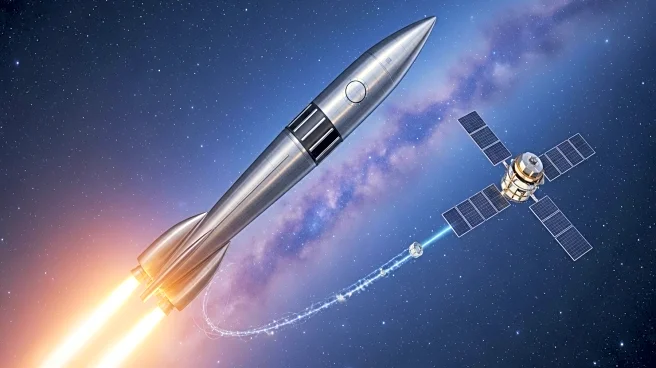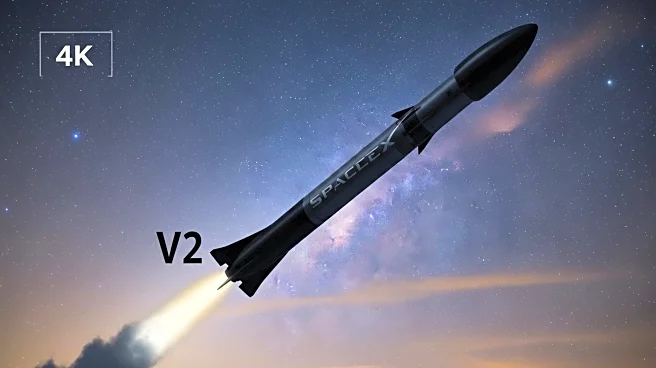What's Happening?
SpaceX has successfully completed the 11th test flight of its Starship rocket, achieving all mission objectives. The test, conducted on October 12, 2025, involved the Starship's 'Ship' upper stage and
the Super Heavy booster, both designed for reusability. The vehicle, which stands nearly 400 feet tall, is part of SpaceX's vision to establish a permanent human presence on Mars. The recent test flight saw the Super Heavy booster hover in mid-air before descending into the Gulf of Mexico, marking a significant step in SpaceX's efforts to make the Starship fully reusable. The Ship upper stage also completed a successful splashdown in the Indian Ocean. This test follows a series of challenges faced by the Starship V2 over the past year, but recent flights have demonstrated improvements and reliability.
Why It's Important?
The successful test flight of SpaceX's Starship is a critical development in the company's long-term goal of enabling human colonization of Mars. The reusability of the Starship components is essential for reducing costs and increasing the frequency of space travel. This achievement also holds significance for NASA, which has selected the Starship as the lunar lander for its Artemis 3 mission, aiming to return humans to the moon by 2027. The progress made by SpaceX could accelerate timelines for both Mars colonization and lunar exploration, impacting the future of space travel and exploration. Additionally, the success of these tests could bolster SpaceX's position in the commercial space industry, potentially leading to more contracts and collaborations.
What's Next?
SpaceX plans to continue refining the Starship design, with a taller, upgraded version three (V3) iteration in development. The company aims to make the Starship fully operational by 2027 to meet NASA's Artemis 3 mission timeline. Future tests will likely focus on improving the reusability of both the Ship and Super Heavy booster, with plans to catch the booster using the 'Mechazilla' chopstick arms attached to the launch tower. SpaceX's first attempt to catch the Ship upper stage is expected in early 2026. These developments will be closely watched by industry stakeholders and could influence future space exploration strategies.
Beyond the Headlines
The advancements in SpaceX's Starship program could have broader implications for the space industry, including the potential for increased international collaboration and competition. The reusability of spacecraft components could lead to more sustainable and cost-effective space missions, opening up new opportunities for scientific research and commercial ventures. Additionally, the success of the Starship could inspire further innovation in space technology, potentially leading to advancements in propulsion systems, materials science, and space infrastructure.











